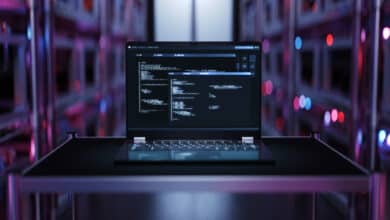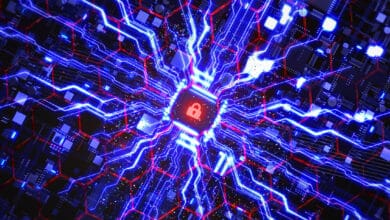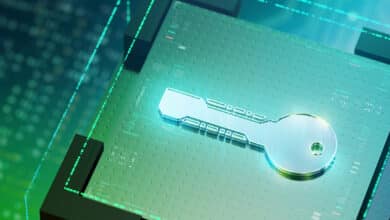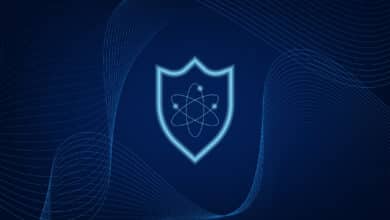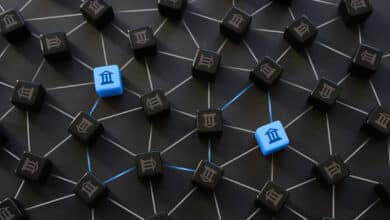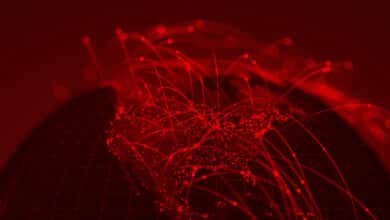Post-Quantum, PQC, Quantum Security
PostQuantum.com – Industry news and blog on Quantum Computing, Quantum Security, PQC, Post-Quantum, AI Security
-
Capability B.4: Qubit Connectivity & Routing Efficiency
Qubit connectivity refers to which qubits can interact directly (perform two-qubit gates) with each other. This is often visualized as a connectivity graph: each node is a qubit, and an edge between two nodes means those qubits can be coupled for a two-qubit gate. Some hardware has a dense graph…
Read More » -
How to Perform a Comprehensive Quantum Readiness Cryptographic Inventory
A cryptographic inventory is essentially a complete map of all cryptography used in an organization’s systems – and it is vital for understanding quantum-vulnerable assets and planning remediation. In theory it sounds straightforward: “list all your cryptography.” In practice, however, building a full cryptographic inventory is an extremely complex, lengthy…
Read More » -
Infrastructure Challenges of “Dropping In” Post-Quantum Cryptography (PQC)
Post-quantum cryptography (PQC) is moving from theory to practice. NIST has now standardized several PQC algorithms - such as CRYSTALS-Kyber for key exchange (now known as ML-KEM) and CRYSTALS-Dilithium and SPHINCS+ for digital signatures - and major tech companies like Google, AWS, and Cloudflare have begun experimenting with integrating these…
Read More » -
4,099 Qubits: The Myth and Reality of Breaking RSA-2048 with Quantum Computers
4,099 is the widely cited number of quantum bits one would need to factor a 2048-bit RSA key using Shor’s algorithm – in other words, the notional threshold at which a quantum computer could crack one of today’s most common encryption standards. The claim has an alluring simplicity: if we…
Read More » -
Telecom’s Quantum‑Safe Imperative: Challenges in Adopting Post‑Quantum Cryptography
The race is on to quantum‑proof the world’s telecom networks. With cryptographically relevant quantum computers (CRQC) projected to arrive by the 2030s, global communications providers face an urgent mandate to upgrade their security foundations. Today’s mobile and fixed‑line networks rely on public-key cryptography that quantum algorithms could eventually break. In…
Read More » -
Quantum Computing Risks to Cryptocurrencies – Bitcoin, Ethereum, and Beyond
Cryptocurrencies like Bitcoin and Ethereum derive their security from cryptographic algorithms – mathematical puzzles that are practically impossible for classical computers to solve in any reasonable time. However, the emergence of quantum computing threatens this security assumption. Unlike classical machines, quantum computers leverage quantum mechanics to perform certain computations exponentially…
Read More » -
Rethinking Crypto-Agility
At its core, crypto-agility means being able to swiftly swap out cryptographic algorithms or implementations when weaknesses emerge. In an ideal world, an organization could “drop in” a new encryption algorithm as easily as a software patch, ensuring they stay ahead of threats like quantum computing. The goal is admirable…
Read More » -
Law Enforcement in the Quantum Computing Era
Law enforcement agencies occupy a unique position in the context of the quantum threat. They are both protectors of society’s security and heavy users of sensitive information systems, which makes them especially exposed if those systems are compromised. Here’s why law enforcement is special: Highly Sensitive Data: Police and investigative…
Read More » -
Cybersecurity Negligence and Personal Liability: What CISOs and Board Members Need to Know
“Could I personally be sued or fined if our company gets breached?” This uneasy question is crossing the minds of many CISOs and board members lately. High-profile cyber incidents and evolving regulations have made it clear that cybersecurity is not just an IT problem - it’s a corporate governance and…
Read More » -
Quantum Security: Understanding the Terminology and Context
"Quantum security" is a term that is increasingly being used. With everyone having their own definition of the term. It can carry multiple meanings depending on context, but so do other related terms. The whole field is fairly new and related terms are not yet clearly defined. So this is…
Read More » -
Upgrading OT Systems to Post‑Quantum Cryptography (PQC): Challenges and Strategies
Operational Technology (OT) environments, such as industrial control systems and critical infrastructure, are especially at risk due to their long-lived devices and infrequent updates. Many OT systems deployed today will still be in use a decade or two from now, well within the timeframe experts anticipate quantum attacks to become…
Read More » -
Quantum Risk: The Coming Cryptography Reckoning
In a secure data center somewhere, an adversary is quietly stockpiling encrypted emails, financial transactions, and state secrets - betting that within a decade a new kind of machine will decrypt them in minutes. This scenario underpins what cybersecurity experts are calling "quantum risk." In essence, quantum risk is the…
Read More » -
Cryptographic Bill of Materials (CBOM) for an Open RAN-Based Telecom RAN
Based on anonymized results of a project, I will try to illustrate key parts of a comprehensive Cryptographic Bill of Materials (CBOM) for a telecom Radio Access Network (RAN) implementation based on the Open RAN architecture. I enumerate all cryptographic mechanisms across the control plane, user plane, management interfaces, and…
Read More » -
Cryptographic Stack in Modern Interbank Payment Systems
International interbank payments rely on multiple layers of classical cryptography to ensure security from end to end. When a user initiates a cross-border transfer at their local bank, cryptographic mechanisms protect the transaction at every stage - from the customer’s online banking session, through the bank’s internal systems, across the…
Read More » -
Post-Quantum Cryptography (PQC) and Network Connectivity: Challenges and Impacts
PQC brings new dependencies between cryptography and network connectivity. Unlike the relatively small and efficient crypto of the past, post-quantum algorithms force us to consider link capacity, latency, and device limitations as first-class concerns in security design. Some network environments - particularly low-power and low-bandwidth links - will face significant…
Read More »

